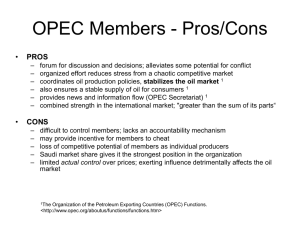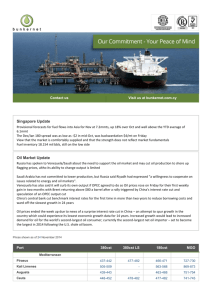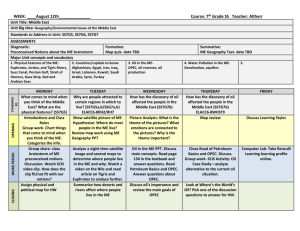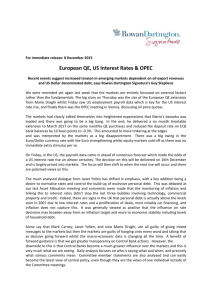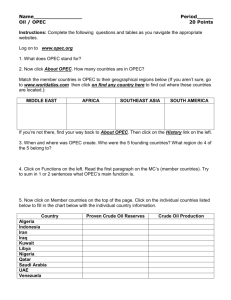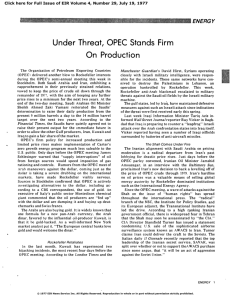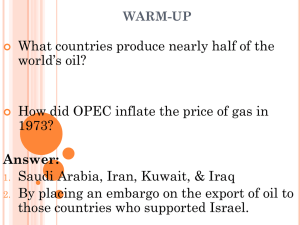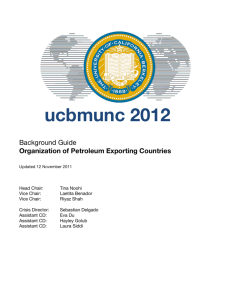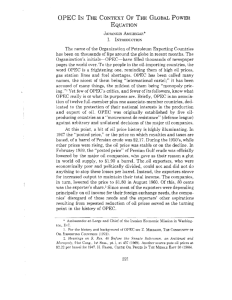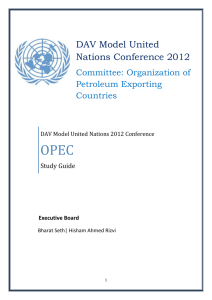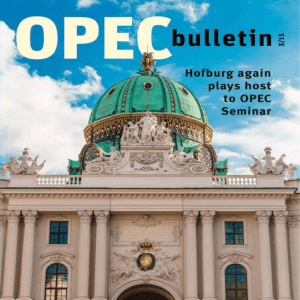OPEC
advertisement
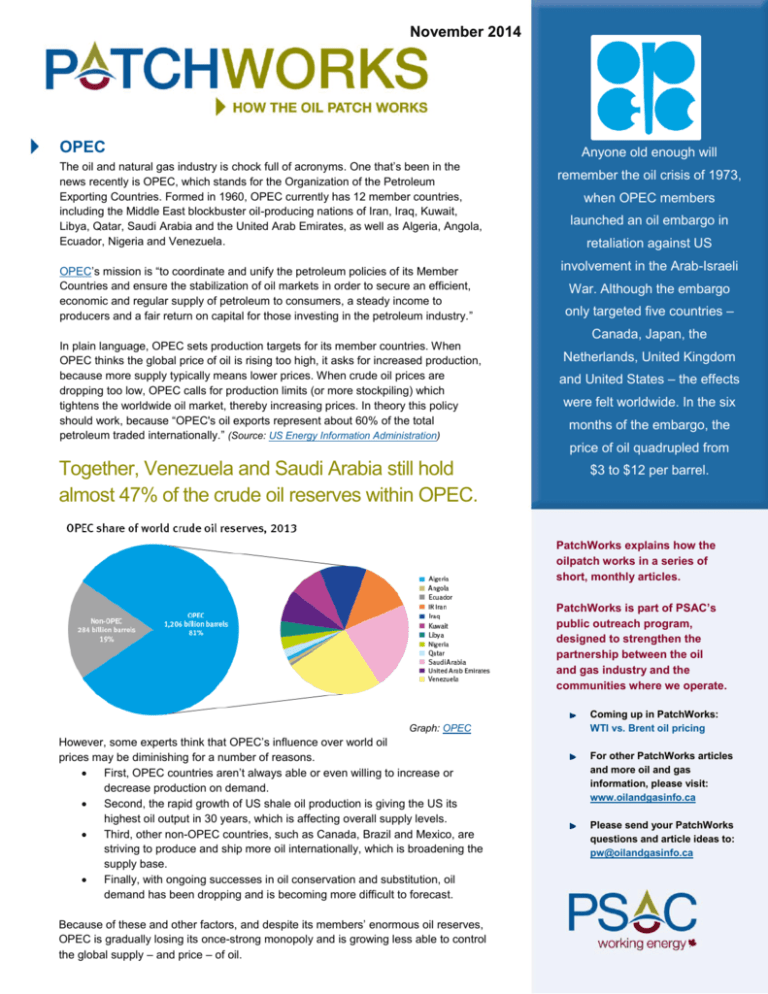
November 2014 OPEC Anyone old enough will The oil and natural gas industry is chock full of acronyms. One that’s been in the news recently is OPEC, which stands for the Organization of the Petroleum Exporting Countries. Formed in 1960, OPEC currently has 12 member countries, including the Middle East blockbuster oil-producing nations of Iran, Iraq, Kuwait, Libya, Qatar, Saudi Arabia and the United Arab Emirates, as well as Algeria, Angola, Ecuador, Nigeria and Venezuela. OPEC’s mission is “to coordinate and unify the petroleum policies of its Member Countries and ensure the stabilization of oil markets in order to secure an efficient, economic and regular supply of petroleum to consumers, a steady income to producers and a fair return on capital for those investing in the petroleum industry.” remember the oil crisis of 1973, when OPEC members launched an oil embargo in retaliation against US involvement in the Arab-Israeli War. Although the embargo only targeted five countries – Canada, Japan, the In plain language, OPEC sets production targets for its member countries. When OPEC thinks the global price of oil is rising too high, it asks for increased production, because more supply typically means lower prices. When crude oil prices are dropping too low, OPEC calls for production limits (or more stockpiling) which tightens the worldwide oil market, thereby increasing prices. In theory this policy should work, because “OPEC's oil exports represent about 60% of the total petroleum traded internationally.” (Source: US Energy Information Administration) Netherlands, United Kingdom and United States – the effects were felt worldwide. In the six months of the embargo, the price of oil quadrupled from Together, Venezuela and Saudi Arabia still hold almost 47% of the crude oil reserves within OPEC. $3 to $12 per barrel. PatchWorks explains how the oilpatch works in a series of short, monthly articles. PatchWorks is part of PSAC’s public outreach program, designed to strengthen the partnership between the oil and gas industry and the communities where we operate. Graph: OPEC However, some experts think that OPEC’s influence over world oil prices may be diminishing for a number of reasons. First, OPEC countries aren’t always able or even willing to increase or decrease production on demand. Second, the rapid growth of US shale oil production is giving the US its highest oil output in 30 years, which is affecting overall supply levels. Third, other non-OPEC countries, such as Canada, Brazil and Mexico, are striving to produce and ship more oil internationally, which is broadening the supply base. Finally, with ongoing successes in oil conservation and substitution, oil demand has been dropping and is becoming more difficult to forecast. Because of these and other factors, and despite its members’ enormous oil reserves, OPEC is gradually losing its once-strong monopoly and is growing less able to control the global supply – and price – of oil. Coming up in PatchWorks: WTI vs. Brent oil pricing For other PatchWorks articles and more oil and gas information, please visit: www.oilandgasinfo.ca Please send your PatchWorks questions and article ideas to: pw@oilandgasinfo.ca
